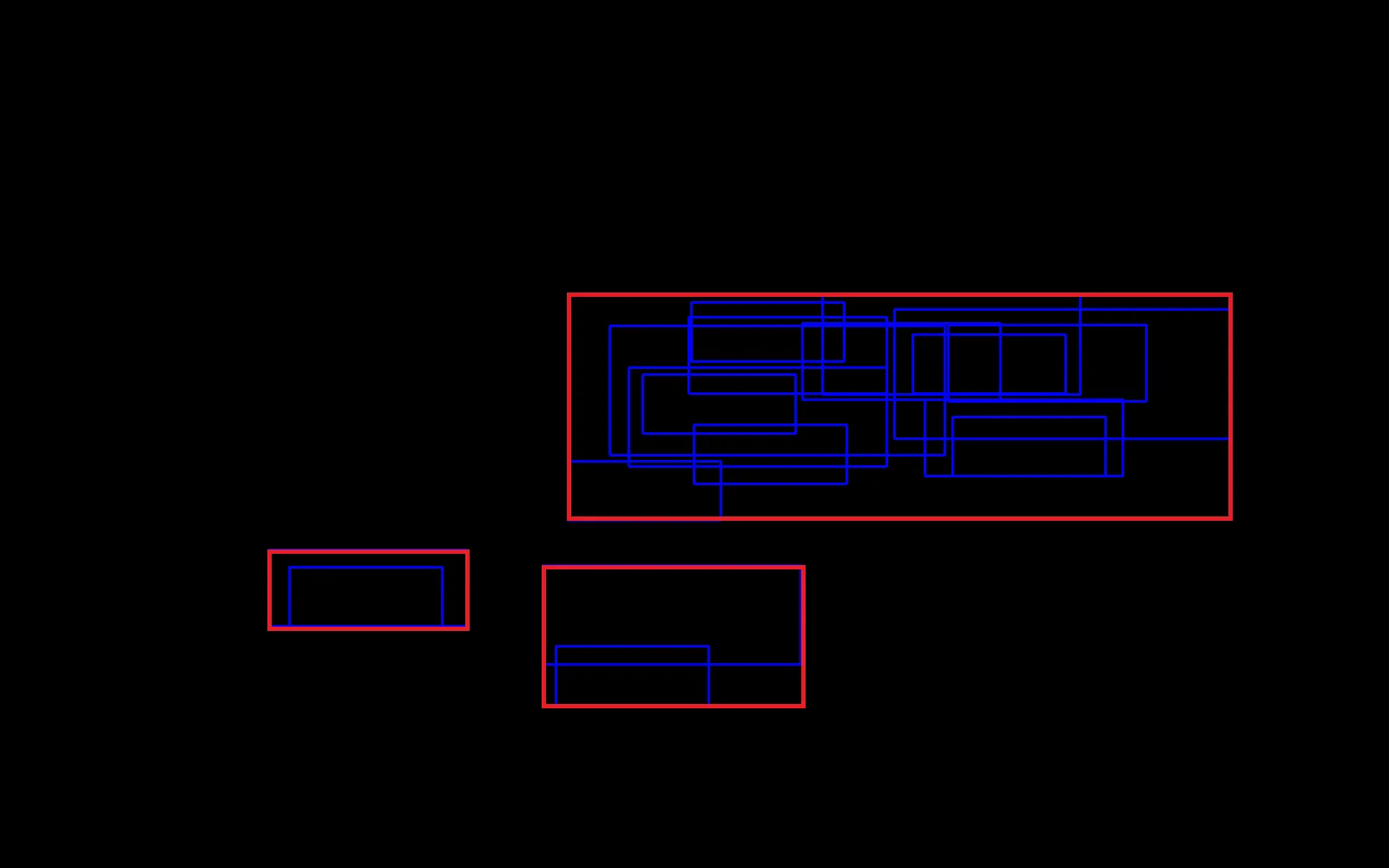我有几个包围同一物体的重叠边界框,但在某些地方它们仅略微重叠。作为一个整体,它们覆盖整个物体,但 openCV 的 groupRectangles 函数不返回完全包含物体的框。这里显示了我拥有的边界框为蓝色,我想要返回的边界框为红色。

我想获取仅重叠矩形的并集,但不确定如何遍历列表而不组合每个矩形。我已经展示了 union 和 intersect 函数,以及一个由 (x y w h) 表示的矩形列表,其中 x 和 y 是框左上角的坐标。
def union(a,b):
x = min(a[0], b[0])
y = min(a[1], b[1])
w = max(a[0]+a[2], b[0]+b[2]) - x
h = max(a[1]+a[3], b[1]+b[3]) - y
return (x, y, w, h)
def intersection(a,b):
x = max(a[0], b[0])
y = max(a[1], b[1])
w = min(a[0]+a[2], b[0]+b[2]) - x
h = min(a[1]+a[3], b[1]+b[3]) - y
if w<0 or h<0: return () # or (0,0,0,0) ?
return (x, y, w, h)
目前我的合并函数如下:
def combine_boxes(boxes):
noIntersect = False
while noIntersect == False and len(boxes) > 1:
a = boxes[0]
print a
listBoxes = boxes[1:]
print listBoxes
index = 0
for b in listBoxes:
if intersection(a, b):
newBox = union(a,b)
listBoxes[index] = newBox
boxes = listBoxes
noIntersect = False
index = index + 1
break
noIntersect = True
index = index + 1
print boxes
return boxes.astype("int")
这已经完成了大部分工作,如下所示:

但是还有一些嵌套的边界框我不确定该如何继续迭代。
print(type(boxes))- salparadise